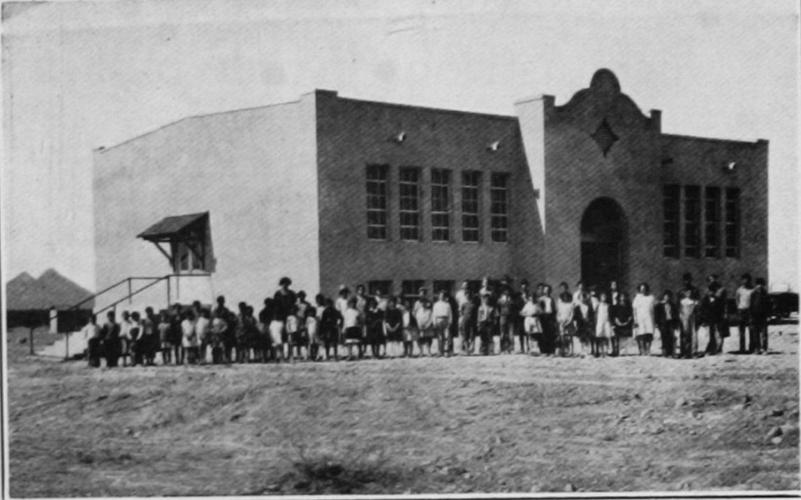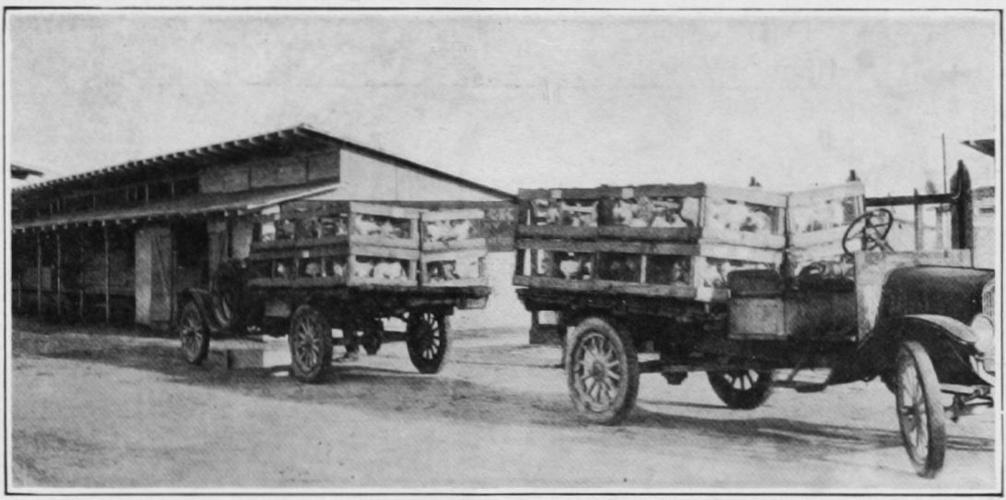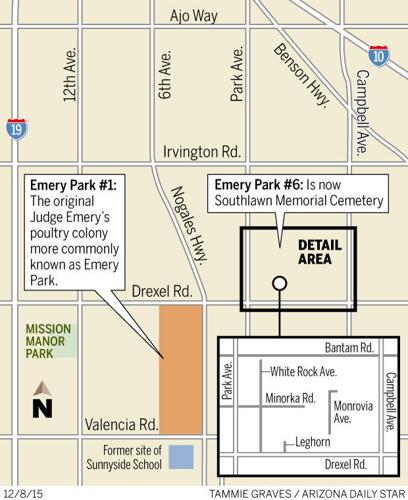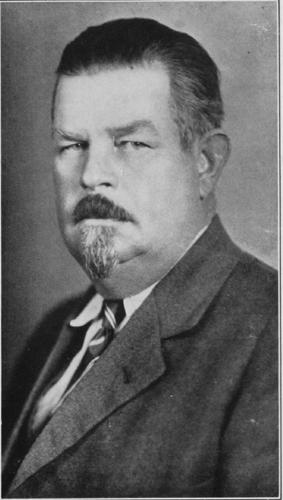A south-side neighborhood began as a colony for people who raised chickens.
Its developer, Alfred J. Emery, was known as the “Judge Emery” because of all the judging he did at poultry contests across the United States.
He was born on Oct. 23, 1879 in Petrolia, Pennsylvania and studied poultry and dairy husbandry at Pennsylvania State University.
He married Elizabeth Shields in about 1901 and they had several children including Mildred, Camilla, Enos, Jack, Joseph and Paul.
From 1907 to 1913, he was the chief dairy inspector of Oklahoma. He then relocated to Petaluma, California, to take charge of extensive poultry interests. He later moved to Livermore, California, and founded what is said to have been the biggest poultry farm in the state.
He moved to Tucson in 1925.
On Jan. 30, 1926, Judge Emery, announced that he would begin construction of a poultry demonstration farm. He started clearing a large tract of land, five miles south of Tucson on the Nogales Highway to be converted into a poultry colony.
Part of the reason for the site, which was considered far out of town at the time, was its sandy-loam soil, which exposes itself easily to the sun’s rays when turned over and as a result ensures the killing of germs, maintaining a healthier environment for chickens.
The following month, ads for Judge Emery’s Poultry Colony, more commonly known as Emery Park, began to appear in the Arizona Daily Star, some giving the names of individuals from out of state who had purchased property in the new development.
Judge Emery would give instruction on raising chickens and laying eggs at the demonstration farm, which was was built on five acres. It was also the location of the large incubator house where the hatching for the entire colony was done.
All the colonists received their baby chicks at the exact rate it cost the demonstration farm to produce. White Leghorns were principally raised there because of their high egg production compared to other types of chickens.
Each individual or family that became a part of the colony came in under the same plan. Each received a tract of 2ƒ acres of land, with the homes being individual to suit the owner but constructed with certain restrictions. The rest of the equipment and buildings were uniform in measurements and character for almost all the homes.
The house was in the middle and near the front of the each tract, with a 3,000-gallon redwood water tank to the rear of the house. An electric motor pulled water from about 50 to 60 feet below ground to the water tank. On the north side of the land was the brooder house and behind it, to the west, was the garage, with the chicken coops attached to the garage in a long building.
Shade or fruit trees, such as peaches or apricots, were planted and the remaining land was used to grow food for the family or greens, such alfalfa, kale, chard and cabbage, which were used to feed the chickens.
Just to the east of Emery Park was the Aguirre Station and siding that was part of the Southern Pacific and Southern Pacific de Mexico railroad line. The close proximity of the station and the colony made it easy for colonists to travel to Tucson and to transport poultry products, although Emery Park had its own trucks to carry products to Tucson and other areas.
The Emery Park Post Office was also set up at some point along Nogales Highway, near present-day Bilby Road. For many years it operated as an independent post office until becoming a branch of the Tucson post office system.
In an April 1927, interview Judge Emery stated: “Ninety-five percent of the persons located at Emery Park have no experience in raising poultry … in fact, it is preferable that they have no experience to start with, for they are more teachable when they do not come to the colony with preconceived notions as to how the thing should be done. Among our colonists we have all kinds of trades and professions. There are laborers, mechanics, North Dakota farmers, bankers and druggists.”
One of the families that arrived at Emery Park in 1928 was the Korte family, which included Edward and Grace, along with children Dennis and Marcella with son Gerald being born the following year. Edward had been a tool and die man for the Ford Motor Co., in Dearborn, Michigan. He had developed severe asthma, likely as result of his service in World War I, and was looking for another place to live for his health.
His son Dennis, born in 1925, lived in the poultry colony from the time he was 3 years old until he was 17. He remembers attending the Sunny Side School (now Sunnyside) that had been built around 1927 and was on the southwest corner of Valencia Road and Nogales Highway. He recalls it was a two-story brick building that had four classrooms with an auditorium upstairs. The school served first through eighth grades with two grades per class.
He remembers that every morning all of the children, many of whom were from Emery Park, would gather in front of the flagpole by the main entrance and recite the Pledge of Allegiance.
As time passed, Judge Emery — who was quite successful in his business venture — began to purchase more and more land in the area and bought a large parcel northeast of the original Emery Park.
In March 1928, Emery recorded the plot with Pima County as Emery Park Unit #6 subdivision, along with several streets named after family members. Camilla Avenue (now part of Park Avenue) was named after his daughter, Elizabeth Avenue (now abandoned) was named after his wife, and Mildred Avenue (now abandoned) named after another daughter.
He also gave some streets names that relate to poultry such as Bantam Road, Minorka Road (correctly spelled Minorca), White Rock Avenue, Leghorn Avenue and Wyandotte Avenue (now part of Campbell Avenue). Much of this land is now the South Lawn Memorial Cemetery.
By September 1929, Emery Park comprised about 2,000 acres and Judge Emery may have owned more land that wasn’t yet part of Emery Park. The following month the Crash of 1929 took place and the Great Depression began. Judge Emery’s dream colony collapsed, although the Emery family held on for a while.
On Dec. 1, 1935 son Jack Emery, a clerk at Steinfeld’s department store, died and was buried at Holy Hope Cemetery. The following year is believed to be the final year the family lived in Tucson.
Note: In the late 1940s, parts of the original Emery Park were re-subdivided under the name San Xavier Vista by Albert and Adelia Walker, Harold and Anna Schilling, and Everett and Vivian Dunton. The streets Walker Place, Schilling Place, Dunton Avenue and Vivian Drive were recorded by these individuals.












